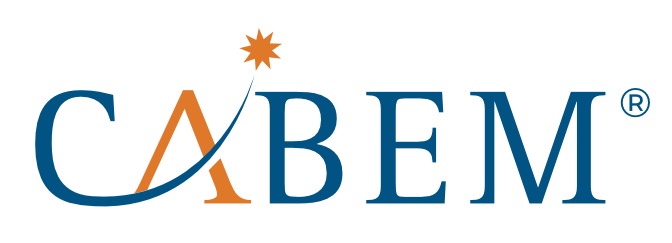The Importance of Health and Safety Compliance in the Construction Industry
Maintaining compliance in the construction industry is a challenge. There are extensive regulations that must be followed, it’s the law. In addition to contractual agreements between the owner and contractors, there are building codes, insurance, and bonding requirements, credit and background checks, payroll, lien requirements, and safety regulations that all must be addressed. There are tough penalties that follow for those that do not comply.
Ensuring that health and safety management systems are in place is crucial. Organizations in this industry have a moral and legal duty to make sure every person on a site is sufficiently competent to do their job, and maintain compliance with regulations and certifications. This article will take a closer look at competency and compliance in the Construction Industry, as well as how an automated competency management program can be instrumental in alleviating the stress of maintaining compliance.
What does it mean to be competent in the Construction Industry?
Competency is the combination of the training, skills, experience, and knowledge that a person has. In order to be considered competent, an employee must be able to consistently demonstrate responsibility and carry out tasks according to specific standards. Additionally, competency encompasses attitude, personality, and physical abilities. A skill is a specific ability to perform a task, while competency means that a person also knows the correct manner in which to carry out the task. Competencies are the descriptions that define the effective or successful performance of work roles and responsibilities.
Competency in every individual involved in a construction project, from designers to site workers, is fundamental to completing a project safely. For example, a worker that can operate the machinery needed for a construction job has a skill, but a work that is able to operate it in accordance with best health and safety practices is competent. The most common root cause of construction accidents is a lack of worker competency. In other words, workers fail to work safely because they lack training and experience.
In the past, the construction industry overemphasized “hard” technical skills over “soft” people skills. This led to supervision enforcing the operational tasks more so than the human work. There was an undervalued emphasis on safety competencies in the workplace. Safety competencies must be embedded in the roles and responsibilities of all employees.
What does it mean to be compliant in the Construction Industry?
Despite the burden it carries, compliance has its benefits. It leads to better efficiency, improved health and safety records, cost savings, enhanced brand reputation, and overall performance and competitiveness. This is a must in a heavily-regulated industry like construction.
In construction, regulatory compliance refers to the rules set forth and enforced by the Occupational Safety and Health Administration (OSHA). There are a variety of construction compliance requirements enforced by OSHA. The prime contractor over a project is the person who oversees OSHA compliance in construction. It is crucial to maintain compliance at all times. Some common consequences for failure to comply are safety hazards that cause injuries or accidents, increased risk of lawsuits and penalties, reputational damage, and possible imprisonment.
Across the globe, construction is one of the most lucrative and competitive industries. Construction firms must run efficiently and operate proactively regarding safety and sustainability. Organizations must be able to respond effectively to evolving industry demands. Therefore, certification and regulation compliance is one of the best investments of time and money that a construction firm can make.
There are several ISO standards and OSHA regulations that any construction firm should have in place in order to grow their business, mitigate compliance and liability risks, and run a safe and responsive operation.

What are the most important standards and regulations in the construction industry?
- The Construction Design and Management (CDM) regulation 2015 is important legislation impacting the industry. This regulation aims to improve health, safety, and welfare in the industry when carrying out construction projects. The overall goal is to reduce the risk of harm to those who have to build, use and maintain structures. It helps organizations to sensibly plan the work so the risks involved are managed from start to finish.
- OSHA safety standard 29 CFR 1926 provides standards for construction safety. There are 27 subparts. Since construction is such a high-hazard industry and employs more than six million workers, a separate set of OSHA standards was created to provide safety and health regulations for construction workers. This standard includes everything from general safety and health provisions to sanitation and housekeeping.
- In a global marketplace, one way to maintain these necessary checks and balances is with international standards, also known as ISOs. ISO-designed standards are broadly applicable to any organization, regardless of industry. Each contains a set of repeatable processes and benchmarks for monitoring performance and initiating a cycle of continuous improvement. While every organization is different, there are several concerns universal to the construction industry that standardization can help with.
- ISO 45001 is crucial to the construction industry. It provides a proactive framework for both preventing and responding to health and safety incidents.
- ISO 9001 helps provide efficiency and accuracy for construction companies. This is a family of fourteen quality management standards. It provides a high-level framework for bringing health and safety, energy use, and asset management in line with an organization’s business goals. When this is embedded in your competency management plan, every employee understands how their actions benefit the customer experience.
- ISO 14001 and ISO 50001 are accepted worldwide and are effective ways for contractors to meet their compliance requirements. ISO 14001 is concerned with how processes interact with the environment. ISO 50001 standard provides a practical way to improve energy use, through the development of an energy management system.
Every construction company must follow safety regulations. Compliance can be difficult to ensure at all times, especially since regulations often change over time. The use of technology and automation can help construction companies improve construction safety compliance and reduce their risk. An automated competency management program can help relieve some of the stress associated with trying to stay up-to-date with current construction regulations.
How can a competency management software program help?
Despite the burden it carries, compliance has its benefits. It leads to better efficiency, improved health and safety records, cost savings, enhanced brand reputation, and overall performance and competitiveness. This is a must in a heavily-regulated industry like construction.
As construction demands grow, and projects become larger and more complex, the management of day-to-day work grows more complicated as well. Luckily, leading-edge technology and software make it possible to streamline the workload, making it easier to store, track, and analyze data. One of the most important elements in maintaining a successful construction project is having a compliance management practice in place.
CABEM is a custom software company that provides sophisticated products, solutions, and technology services to a discerning client base. With expertise in custom development and cybersecurity, we provide solutions to a variety of markets including healthcare, government, manufacturing, financial, environmental, and construction.
For example, a multi-state, large construction company uses the Competency Manager for field training on construction techniques, proper tool usage, Health and Safety requirements as well as credentials such as CPR certifications. They also use the proficiency module to monitor and manage driving records and driving incidents within the company.
Contact us today to learn how our competency management software, Competency Manager, can help you reduce liability, achieve regulatory compliance, and maintain safety regulations. If you would like to learn more, please visit our website and schedule a call today.

